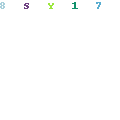|
|
Stands in its way of ranking highly in search results. 8. Create a sitemap A sitemap is what it sounds like — a map that outlines the structure of your pages. A sitemap is a blueprint for Google, and creating one makes it easier for Google to index and track the pages on your site. There are two types of sitemaps: HTML: This sitemap uses HTML code to outline your site structure, links, and pages. These sitemaps are for humans, as users can find and click through your sitemap to find different pages. XML: This sitemap is specifically for search engine crawlers. A search engine can easily extract the information it needs to view your website structure from an XML sitemap.
You can use both kinds of maps to help your site rank and benefit Brazil WhatsApp Number Data users and engines alike. Depending on your website host, uploading the map to your site might look different. This video outlines how to use a sitemap to help your page rank: 9. Use your keywords strategically Keywords tell Google (and users) what your page is about. They also help you find related topics and target search intent to reach qualified users. You should include your target keyword in the following areas for the most impact:

Two times in body content H1 Title tag Meta description URL Be sure to incorporate related keywords, and only use those that don’t challenge the target keyword or other pages on your site! 10. Consider search intent Search intent describes what users look for when entering terms into Google. For example, if someone is looking for a page on “how to clean sneakers,” the results look something like this: If you target that keyword on an ecommerce page selling sneakers, your users will click away, and Google will rank your page lower and lower.
|
|